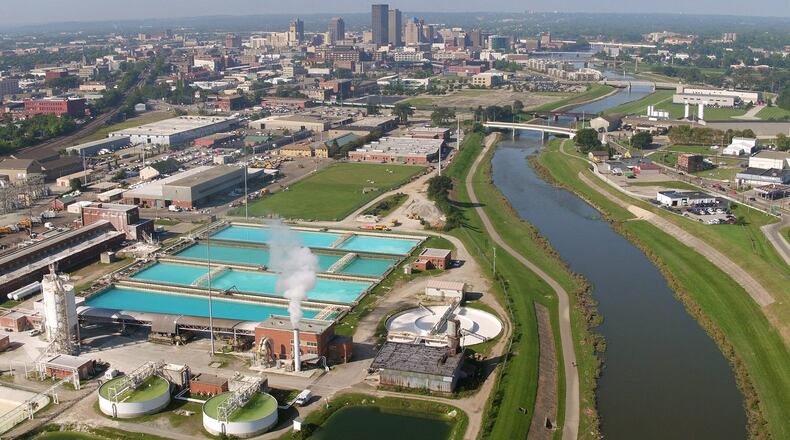There is no immediate funding directly tied to the PDAC process. And many of these proposals are concepts for which a groundbreaking or execution is years away.
Instead, the annual process lets governments and nonprofits submit ideas for projects that could use federal or state funding to create jobs and make life better. When the process opened last fall, PDAC (as the process is called) was in its 22nd year.
The list allows Dayton-area advocates — primarily government leaders and the Dayton Development Coalition and its allies — to approach Washington D.C. and Columbus with a unified voice.
Although the coalition helps guide the process, neither the coalition nor anyone associated with PDAC awards funding, leaders with the organization have emphasized.
Not all of the proposals are new, but there are ideas from every corner of the Miami Valley here, from Piqua to Wilmington. You’ll find proposals here for everything from sharpening AI tools for national defense to making sure the area’s drinking water is safe.
Among the notable submissions this year:
The city of Fairborn is asking for $11,787,585 to help build a two-story, 40,000-square-foot “Sensitive Compartmented Information Facility (SCIF)” building to support defense contractors for secure, private work.
The Skyway SCIF will be situated directly across from Wright-Patterson Air Force Base’s busy gate-12A, not far from National Air and Space Intelligence Center (NASIC) and Air Force Materiel Command headquarters, both of which are a short drive from that gate.
The total project cost here is put at $13,392,120, and the city’s expectation is that this building would help create 101 to 250 new jobs.
The city of Dayton wants to build a new 36-inch water main within the Miami Well Field.
The idea here is to hold down PFAS chemical levels by increasing production at the Miami Well Field to convey raw water to the city’s Ottawa treatment plant.
PFAS (per- and polyfluoroalkyl substances) are a group of chemicals that are very difficult to break down due to their chemical composition.
“The city of Dayton should not be responsible for the remediation of the PFAS contamination,” the city said in its PDAC submission. “Dayton did not cause the WPAFB (Wright-Patterson Air Force Base) contamination, which occurred outside of Dayton on property owned and controlled by the U.S. government.”
Dayton has sued PFAS manufacturers as well as the Department of Defense and Wright-Patterson to remediate these sites, the city noted.
“It is inherently unfair to require the impoverished ratepayers of the city of Dayton to cover the cleanup of pollution that the city did not cause and that occurred outside of Dayton’s boundaries in areas where it had no control,” the city said.
At the time of the lawsuit in the spring of 2021, Wright-Patt and defense officials denied the city’s allegations, saying they followed federal guidelines and were taking an aggressive approach against the chemicals. By the city’s own admission, the base noted at the time, Dayton’s water was safe to drink.
The city seeks $8 million while the project’s total funding is put at $10 million.
The Miami Conservancy District seeks funds for “critical repairs” to the concrete walls of the district’s Germantown, Englewood, and Taylorsville dams.
The dams “require critical and immediate repairs to ensure their ability to store floodwaters and protect downstream cities, including Dayton, during large rain events,” the district said in its submission. “This project will include patching or total replacement of the concrete on the upstream walls, improvements to drainage along the dam, and other work items to ensure wall stability.”
The funding request is $9.6 million while the total funding is put at $12.9 million.
The district has also asked for nearly $3.5 million to design and build a new entrance to the Huffman Prairie Flying Field National Historical Park site at Wright Patterson, providing access for visitors and improving base security.
The work would involve a new road connecting Kauffman and Marl roads, improving the Kauffman and Ohio 444 intersection and other changes.
Wright State University wants to build an “Aerospace Medicine and Human Performance National Center of Excellence.”
Wright State, through its Boonshoft School of Medicine, is in the beginning stages of creating a “unique medical school track that directly compliments the needs of Wright-Patterson Air Force Base,” the university said in its PDAC submission.
“By leveraging existing infrastructure and partnerships, Wright State University will be able to offer a state-of-the-art educational track for medical school students to enter a career focusing on military-related human performance.”
Since 2008, the 711th Human Performance Wing has been based at Wright-Patt, studying aspects of human performance relevant to the rigors of warfare.
The university’s funding request here is $12 million for a project seen to have a total value of $15 million.
The Wright-Dunbar neighborhood could benefit from a development fund to create access to capital for development along West Third Street, according to a city of Dayton submission.
“Through a combination of grants and loans, the fund will provide gap financing for large-scale community and economic development projects focusing on housing, commercial, retail and/or mixed-use development projects,” the city said in its PDAC submission. “The fund will leverage over $38 million in committed investments to the district through 2027.”
The request is $10 million for a project whose total cost is put at $88 million.
Dayton defense contractor Mile Two is proposing a “non-kinetic effects (NKE) test range” to support the Air Force Research Laboratory (AFRL) and the 178th Air National Guard Wing at the Springfield Air National Guard Base.
In warfare terms, “kinetic” refers to anything that involves physical force or damage. Here, the proposal is to tap into some of Mile Two’s and the Air Force’s areas of expertise, including computer modeling and simulation, artificial intelligence large language modeling and retrieval-augmented generation (RAG) tools, which enhance AI language models.
Said Mile Two: “A dedicated test range would provide a controlled environment for assessing these effects on systems and personnel, ensuring that operators can effectively prepare for real-world scenarios.”
The funding request here is $6.5 million for what is said to be a total project cost of $10.7 million. The submission says $4.2 million was requested from JobsOhio, the state’s private jobs-creation arm, for training and software development.
Sinclair Community College hopes to renovate and reuse some 50,000 square feet of its downtown Dayton campus for an “Enhanced Manufacturing Education Center.”
“Presently, Sinclair’s manufacturing programs operate in less than modern/optimal facilities and with aging equipment ... to serve the manufacturing training needs of employers and incumbent workers,” the college said in its submission.
The funding request here is $2.5 million in a $30 million project.
Habitat for Humanity of Greater Dayton, Inc. wants to build 30 new homes in Dayton’s Edgemont neighborhood. The funding request is for $3 million in a project deemed to cost $8.3 million.
Habitat says in its submission that loans from the Federal Home Loan Bank of Cincinnati and an unnamed foundation are possible. The organization says the agencies that own each parcel of land eyed for the construction have committed to giving the land to Habitat at no cost.
Kettering’s Crash Course Village is asking for $2 million to create a venue and resources to train local first responders to respond to automobile accidents.
“RescueWorld” will allow additional training that will reflect the increasing complexity of accidents and will bring thousands of new first responders to Dayton for training,” this PDAC submission says.
About the Author




